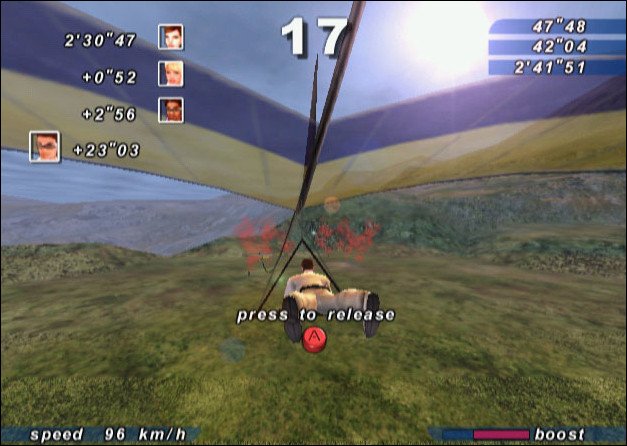
Ah, the SEGA Dreamcast—a veritable juggernaut of innovation, a marvel of technology that graced living rooms with flair and finesse back in its heyday. When it burst onto the scene, it rendered the PSone and N64 almost relics of a bygone era, their designs dwarfed by the Dreamcast’s cutting-edge capabilities.
Among its launch titles, Sonic Adventure catapulted to acclaim, dazzling both gamers and critics alike, while cleverly infiltrating marketing campaigns everywhere. As the life of the console progressed, titles like Metropolis Street Racer and the ambitious Shenmue emerged, luring players with captivating depth and breathtaking detail. Recall the triumph of Quake III Arena, an online gaming spectacle, maintaining its gothic allure amidst chaotic battles. Even upon the arrival of the PlayStation 2, the Dreamcast stood defiantly, showcasing gems like Soul Calibur and the ‘curvaceous’ Dead or Alive 2, rivals to the glitz of Tekken Tag Tournament.
But nestled within the shadows of these celebrated titles lies another gem; one that often drifts beneath the radar yet boasts a certain visual and technical panache—SEGA Extreme Sports.

Crafted by Innerloop Studios, SEGA Extreme Sports pushed the limits of this underappreciated console, introducing features like semi-deformable snow, mesmerizing lens-flare sunsets, and a refreshing mix of visual flourishes. But this was no mere single-event sports game: it was a chaotic symphony of six sports, stitched seamlessly into sprawling multi-event races. Picture this: a daredevil hang-gliding off cliffs, ripping through mud on ATVs, snowboarding towards the finish line, only to leap into the abyss via bungee cord. And don’t overlook the mountain biking and sky surfing that added layers of thrill, some races even commencing high above the earth.
With each discipline offering its own physics and control mechanics, mastering the intricacies became a delightful challenge. Maneuvering through tight canyons on a hang glider, racing down treacherous paths on an ATV, or just trying to keep it together while snowboarding on steep descents demanded exceptional skill. Victory was not a guarantee, even for the most adept users—success in a handful of events didn’t ensure overall triumph. Twelve expansive tracks were set in iconic locales like Mount Kilimanjaro and the Himalayas, often integrating all sporting events into a single breathtaking expedition, all blessed with the rhythmic beats of licensed tracks from Ninja Tunes.
Moreover, the allure of online play beckoned, offering downloadable ghost racers and scoreboards. However, the mixed bag of vehicles likely muddled the waters for full competitive online functionality.


Even in contemporary gaming, it’s a rare sight to witness a title that replicates the exhilarating multi-event format of SEGA Extreme Sports. Sure, we have modern counterparts like Steep and Riders Republic, but they merely delve into singular events.
Diving into the annals of SEGA Extreme Sports‘s tumultuous development reveals a prelude filled with twists and turns. Initially poised as a launch title under Eidos, it faced delays stretching nearly a year before emerging modestly in late 2000. Amidst this saga, publishing rights oscillated between Infogrames for the US, while SEGA seized control to launch it in PAL regions and Japan. Infogrames, in a fit of early 2000s nomenclature, rechristened the game Xtreme Sports—a title of shimmering genericity.
But the rebranding didn’t stop there. A PC iteration released in 2001 morphed into Maximum Sports Extreme, while Empire Interactive clamored for attention by associating it with Pepsi, resulting in—yes, you guessed it—Pepsi Max Extreme Sports. In total, that’s an astounding four names, making it little surprise that this title often slips through the cracks of gaming history.


Poor marketing played its part in shrouding this title in mystery; although published by SEGA, SEGA Extreme Sports lacked the grand promotional blitz that accompanied franchises like Sonic Adventure 2 or Shenmue. It whirled into existence, barely making a ripple in the gaming community. We daresay it never graced the covers of any of Dreamcast’s myriad magazines during its lifespan. A music CD was bundled with one such publication a few months prior to launch, yet the game was never featured on a demo disc, a missed opportunity if there ever was one. With critical scores hovering around a modest 7/10, it received its share of critique regarding erratic controls and character depth—or rather, the lack thereof—leading to claims of it lacking heart.
In retrospect, one could argue that SEGA Extreme Sports may have aimed for the moon, attempting to juggle half a dozen sports in a single race, each sport demanding unique control schemes—a Herculean task in 1999. The swirling tempest of development struggles and fiscal setbacks likely didn’t bolster its prospects either.
Here we are, twenty-five years later, and the call of the wild remains as romantic as ever. SEGA Extreme Sports may well be a nostalgic product of its time—capitalizing on the snowboarding boom—but the dream of racing through fresh powder, defying gravity mid-air, and expertly dodging nature’s obstacles still resonates. One can only hope that someday, a daring developer may rise to the challenge of reviving SEGA Extreme Sports—perhaps in resplendent remaster form. For now, we can only dream, can’t we?

